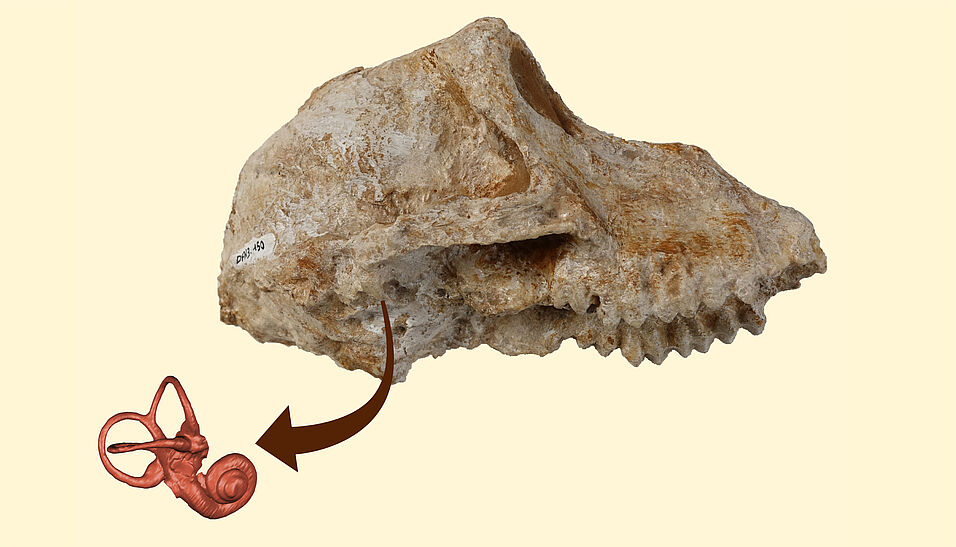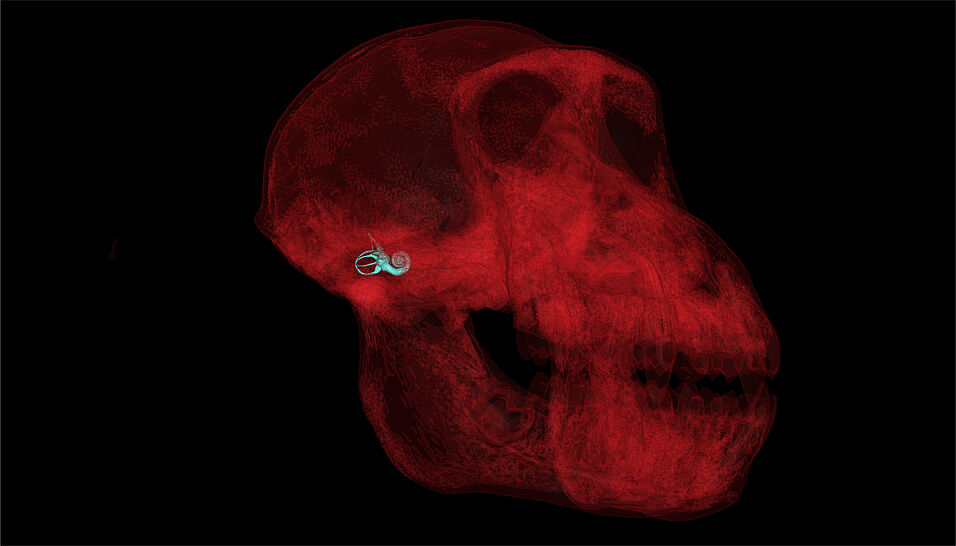Europe and Asia were inhabited by primates long before our species migrated from Africa. The discovery of a 2.3-million-year-old fossilized monkey skull in Greece by a team of researchers from the Universities of Vienna (Austria), Poitiers (France) and Thessaloniki (Greece) give new insights into the ancient Eurasian wildlife. The study of the skull’s inner ear shows that, during a time of climatic cooling, Eurasia was populated by two kinds of primates: macaques in the forests, and larger baboon-like monkeys in the more open spaces.
Nowadays, except for a few rare macaques in Gibraltar, the only primate species living in Europe is our own. However, this was not always the case: 2 to 3.2 million years ago, Eurasia was populated not by humans but by two other kinds of primates: macaques, which probably lived in forested areas, and large monkeys of the genera Procynocephalus and Paradolichopithecus, which roamed open spaces. During this period, these ancient monkeys had to adapt to a gradual decrease in temperature, which led to a gradual change of landscapes but at a much slower pace than the current climate change. In the beginning of the era, large parts continent was covered by forests, which gradually retreated to make way for grasslands populated by animals akin to our current horses, cattle, gazelles, deer, hyenas and dogs.
Monkeys of the genera Procynocephalus and Paradolichopithecus have sometimes been associated with great terrestrial monkeys such as baboons. Yet, most researchers consider that the similarities observed with baboons are only a consequence of their large size and shared adaptations to a terrestrial lifestyle, and that other external and internal anatomical features show they are actually more closely related to macaques. The precise evolutionary and biogeographic history of these species is, however, complex to reconstruct, as the relationship between species is not always clear in the fossil record and there is no way to extract DNA from such ancient fossils.
Newly discovered fossil questions longstanding hypothesis
The discovery of a complete fossil skull in Greece questions this traditional hypothesis of a closer relationship with macaques. It was attributed to a young female of the genus Paradolichopithecus and dated at 2.3 million years, by Gildas Merceron and Franck Guy, from the laboratory PALEVOPRIM - UMR 7262 CNRS of the University of Poitiers (France), and Dimitris S. Kostopoulos, from the Department of Geology of the University of Thessaloniki (Greece). They sought the expertise of Anne Le Maître, from the Department of Evolutionary Biology of the University of Vienna (Austria), to study the bony molding of the inner ear, a structure that is generally well preserved due to its position in a dense bone at the base of the skull, and whose morphology is less dependent on lifestyle than external bony features, like arms or legs. “Using an X-ray microtomography method, we were able to virtually reconstruct the morphology of the bone structures and compare them with several species of present-day monkeys” says Le Maître. Despite some similarities, the shape of the Paradolichopithecus inner ear is clearly not compatible with that of a macaque, even a large one. On the contrary, it seems to be closer to that of the drills, a species close to the baboons.
This result contradicts the traditionally accepted hypothesis of a proximity with macaques, and suggests that the ancient grassland monkey was more related to the baboon group of which no representative exists in Eurasia at the present time. The history of evolution and migrations of this fossil genus is probably more complex than previously thought.
Publication:
Anne Le Maître, Franck Guy, Gildas Merceron, Dimitris S. Kostopoulos. Morphology of the Bony Labyrinth Supports the Affinities of Paradolichopithecus with the Papionina. International Journal of Primatology (2022). doi.org/10.1007/s10764-022-00329-4
Scientific contact:
Anne Le Maître
Department of Evolutionary Biology, Unit for Theoretical Biology
Faculty of Life Sciences, University of Vienna
1030 Vienna, Djerassiplatz 1
+43-1-4277-56710
anne.le.maitre@univie.ac.at


